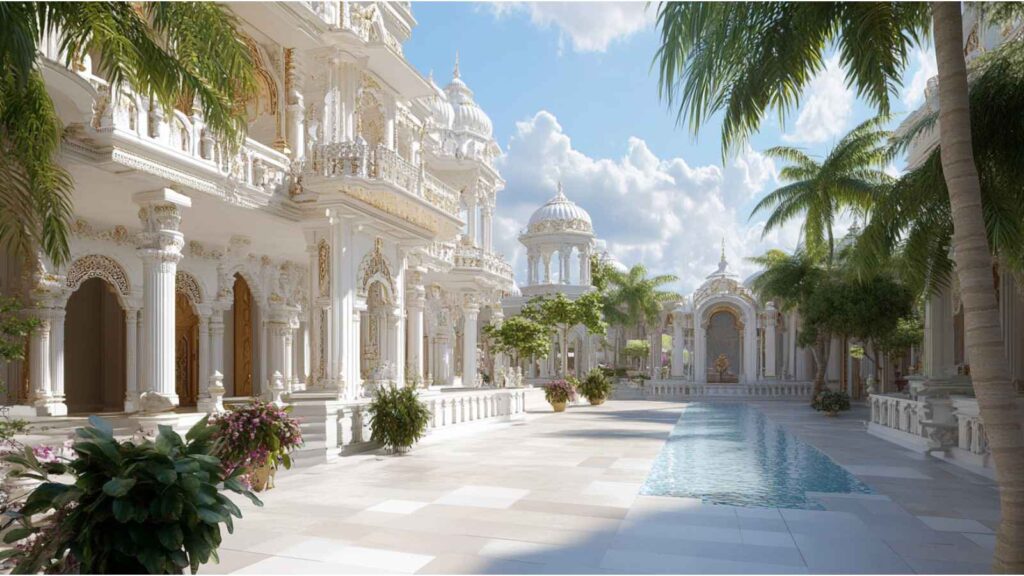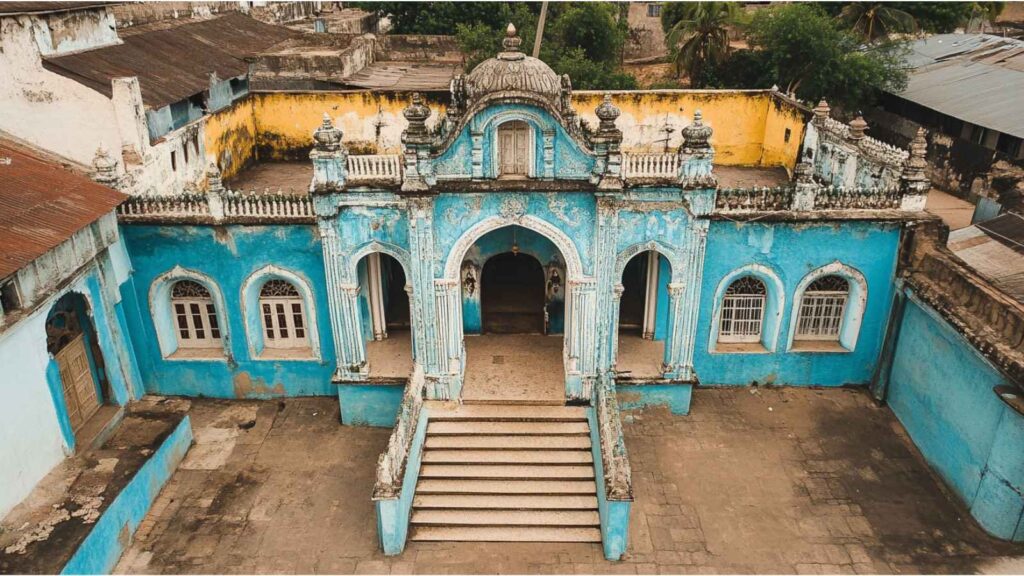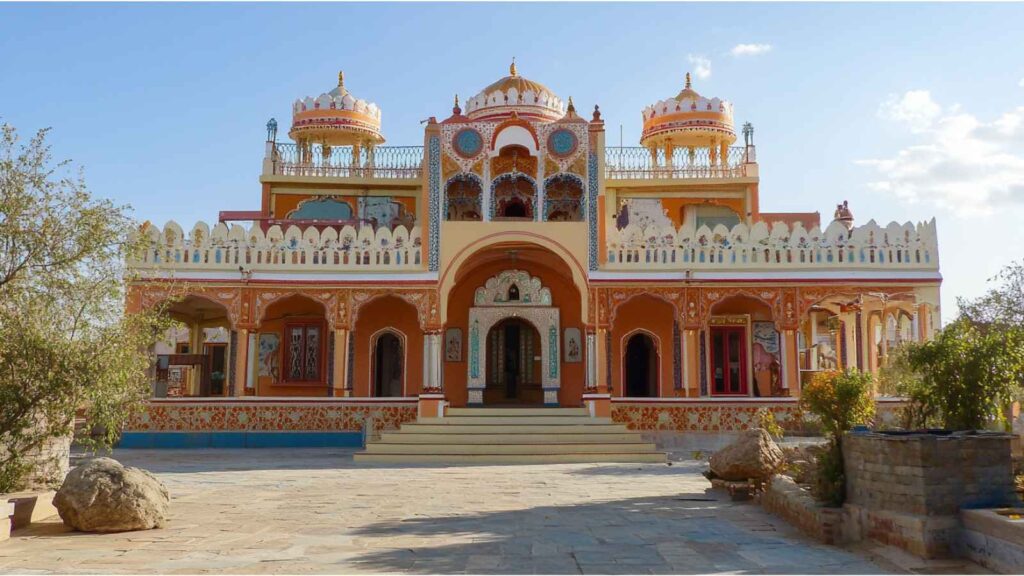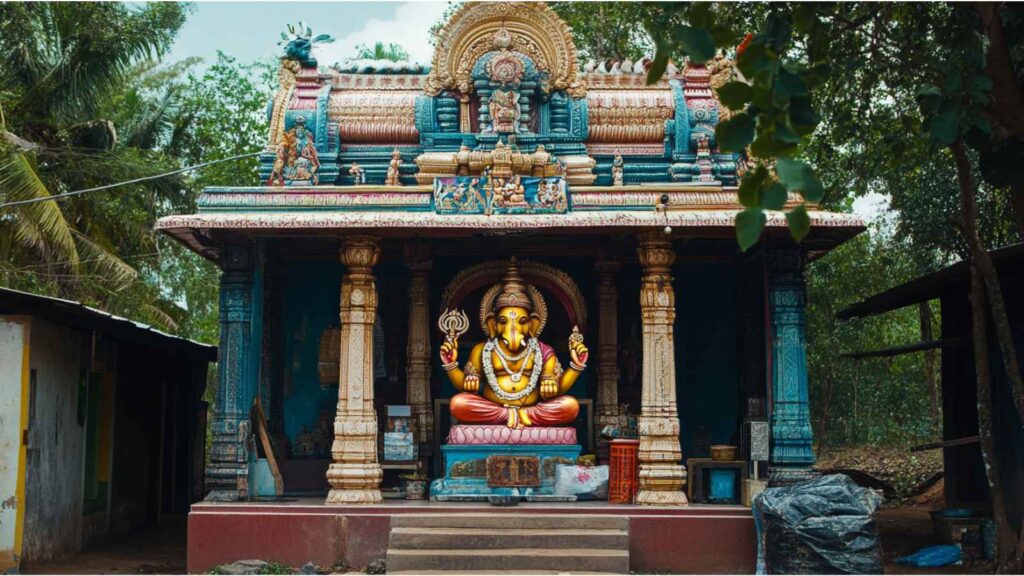Top 10 Must-Visit Hindu Temples in Somalia: A Journey of Faith and Cultural Fusion
Hinduism, one of the world’s oldest spiritual traditions, is celebrated for its profound philosophy, colorful rituals, and timeless art. Although Somalia is widely known for its Islamic heritage, an intriguing chapter of cultural and spiritual exchange is unfolding with the establishment of Hindu temples by a vibrant expatriate and diaspora community. These sacred spaces, scattered across the nation, offer not only a window into India’s ancient traditions but also an inspiring testament to cross-cultural harmony in a region marked by diversity and resilience. Top 10 Must-Visit Hindu Temples in Somalia
In this detailed guide, we invite you to embark on a journey across Somalia—from the bustling streets of Mogadishu to the emerging cultural hubs of Hargeisa, Bosaso, and beyond—to discover ten must-visit Hindu temples. Each temple has its own unique story, blending historical inspiration, innovative architecture, and heartfelt visitor experiences. Whether you are a devotee seeking spiritual solace, an architectural enthusiast, or simply a curious traveler eager to explore new cultural landscapes, these temples offer a rare fusion of tradition and modernity, bridging the ancient wisdom of Hinduism with the dynamic spirit of Somalia.
Read More About Hindu Temple
As you read on, you will find that each temple is not just a place of worship but a vibrant community center—where art, music, literature, and spiritual practice converge to create an atmosphere of unity and renewal. We have meticulously compiled the history, architectural nuances, and visitor insights of each temple to help you plan your spiritual itinerary and appreciate the beauty and depth of Hindu traditions in an unexpected setting.
1. ISKCON Temple Mogadishu

Location: 12 Afgoye Street, Mogadishu, Somalia
Historical Background
The ISKCON (International Society for Krishna Consciousness) Temple in Mogadishu is one of the earliest Hindu establishments in Somalia. Founded in 2012 by a dedicated group of Krishna devotees from the Indian diaspora, this temple began as a humble prayer hall and community center. It was created to serve as a spiritual oasis amid the city’s bustling urban life and has since grown into a vital hub for cultural exchange and interfaith dialogue. The temple’s inception marks a significant milestone in fostering religious diversity and cultural integration in Somalia.
Architectural Highlights
Designed with a fusion of traditional Indian temple architecture and subtle Somali influences, the ISKCON Temple Mogadishu captivates visitors with its intricate façade and vibrant murals. The structure features a sloping tiled roof, ornate columns, and hand-carved wooden doors that echo the heritage of classical Indian design. Inside, a spacious prayer hall is illuminated by natural light filtering through arched windows, where murals depict scenes from the Bhagavad Gita and the life of Lord Krishna in a style that blends contemporary art with traditional motifs.
Visitor Experience
Visitors to the ISKCON Temple in Mogadishu are welcomed into an atmosphere of peace and community spirit. Daily aarti (prayer ceremonies), devotional singing, and interactive classes on Krishna’s teachings create an immersive experience that resonates with both spiritual seekers and casual tourists. Many appreciate the temple’s warm hospitality and the opportunity to engage with its friendly volunteers who share insights on the temple’s history and practices. Whether you are looking to meditate, learn about Vedic philosophy, or simply enjoy the artistic beauty of the murals, a visit here offers a transformative journey of inner discovery.
2. Shree Krishna Temple, Mogadishu

Location: 27 Liido Street, Mogadishu, Somalia
Historical Background
Established in 2015, the Shree Krishna Temple in Mogadishu was founded by a passionate group of devotees eager to celebrate the life and teachings of Lord Krishna. Although the temple is relatively young, its roots are steeped in ancient traditions drawn from sacred Indian texts. It has quickly become a prominent center for religious education, community celebrations, and cultural performances, reinforcing the timeless appeal of Krishna’s divine leelas (playful pastimes).
Architectural Highlights
The Shree Krishna Temple boasts an architectural design that is both elegant and symbolically rich. Its exterior is adorned with colorful frescoes illustrating Krishna’s childhood and his youthful adventures, while the façade is embellished with traditional carvings and motifs typical of Indian temple art. Inside, a beautifully decorated sanctum houses an idol of Krishna, resplendent with traditional jewelry and garlands. The temple’s blend of modern construction with intricate artisan details creates a serene environment that mirrors the spiritual essence of its deities.
Visitor Experience
At the Shree Krishna Temple, visitors are treated to a multisensory experience. The temple offers daily bhajan (devotional song) sessions, interactive storytelling about Krishna’s legends, and festive events during Janmashtami (Krishna’s birthday). Whether you come to seek spiritual guidance or to enjoy the rich cultural displays, the temple’s inviting atmosphere and knowledgeable guides ensure that every visitor leaves with a deeper understanding of Krishna consciousness and a sense of communal belonging.
3. Shree Radha Rani Mandir, Hargeisa

Location: 45 Independence Road, Hargeisa, Somaliland (self-declared, internationally recognized as part of Somalia)
Historical Background
In the northern city of Hargeisa, the Shree Radha Rani Mandir stands as a tribute to Radha—the eternal consort of Krishna and an emblem of divine love and devotion. Founded in 2016 by local devotees and members of the Indian business community, the temple was established to promote spiritual education and cultural exchange in an environment rich with history. The temple’s establishment is a symbol of the vibrant Indian diaspora’s commitment to preserving their cultural heritage while embracing the local context.
Architectural Highlights
The temple’s design is a harmonious blend of traditional Indian and regional Somali aesthetics. The façade features intricate stone carvings and vibrant murals that narrate the timeless love story of Radha and Krishna. A graceful dome crowns the temple, its curves echoing both classical Indian design and the flowing lines of local architecture. Inside, natural light cascades through stained-glass windows, illuminating the delicate paintings and sculptures that adorn the sanctum—a serene space where art and spirituality meet.
Visitor Experience
Visitors to the Shree Radha Rani Mandir are often moved by the temple’s serene ambiance. Guided tours explain the rich symbolism behind the art and architecture, while daily rituals such as aarti and bhajan sessions create an immersive spiritual environment. Workshops on Indian classical music and dance are also held, offering visitors a chance to participate in traditional performances that celebrate the divine romance between Radha and Krishna. The temple not only provides a spiritual retreat but also a cultural experience that resonates with both devotees and art enthusiasts.
4. Sri Ganesha Temple, Bosaso

Location: 18 Port Road, Bosaso, Puntland, Somalia
Historical Background
Dedicated to Lord Ganesha—the remover of obstacles—the Sri Ganesha Temple in Bosaso was established in 2017 by a coalition of expatriate Indians and local community leaders. Recognizing the universal appeal of Ganesha’s benevolence and wisdom, the founders envisioned a sanctuary where people from all walks of life could come together to celebrate unity and resilience. Although the temple is relatively new, its establishment has inspired hope and has become a symbol of overcoming adversity through faith.
Architectural Highlights
The Sri Ganesha Temple is an architectural delight that fuses traditional Indian elements with modern design innovations. The temple’s exterior is marked by bold murals depicting Ganesha in various postures and forms, while the entrance is framed by intricately carved pillars and arches. Inside, the sanctum features an exquisitely sculpted idol of Ganesha, surrounded by decorative rangoli patterns and soft ambient lighting. The interplay of local materials with traditional craftsmanship makes the temple a unique visual landmark in Bosaso.
Visitor Experience
At the Sri Ganesha Temple, every visitor is greeted with a sense of warmth and community spirit. Daily pujas (worship ceremonies) and festive celebrations during Ganesh Chaturthi are highlights that draw both locals and tourists alike. Visitors can join interactive sessions that explain the significance of Ganesha in Hindu mythology, participate in art workshops, and even enjoy communal meals that celebrate vegetarian cuisine. The temple’s welcoming atmosphere and its focus on educational outreach make it an enriching destination for all who seek spiritual and cultural upliftment.
5. Sri Ram Mandir, Kismayo
Location: 33 Ocean Avenue, Kismayo, Somalia
Historical Background
The Sri Ram Mandir in Kismayo was founded in 2018 as a tribute to Lord Ram, whose life and virtues have inspired countless generations. Established by a dedicated group of devotees, the temple seeks to revive the moral and ethical teachings of the Ramayana—a timeless epic that emphasizes honor, duty, and compassion. In a region where cultural narratives are constantly evolving, the temple serves as a beacon of righteousness and resilience, drawing those in search of inner strength and guidance.
Architectural Highlights
The architecture of Sri Ram Mandir is a blend of robust tradition and modern sensibilities. The temple’s exterior features detailed reliefs depicting scenes from the Ramayana, while the façade is adorned with arches and decorative motifs that reflect classical Indian temple design. The interior boasts a spacious, well-lit sanctum where the idol of Lord Ram is showcased with reverence. With carefully chosen local stone and wood accents, the temple’s design creates a seamless dialogue between ancient symbolism and contemporary aesthetics.
Visitor Experience
Visitors to Sri Ram Mandir are immersed in a spiritual narrative that emphasizes discipline and devotion. The temple hosts regular recitations of the Ramayana, interactive discourses on the values of Lord Ram, and communal meditation sessions that help foster inner peace. During Ram Navami, the temple becomes a vibrant center of celebration, with cultural performances, traditional music, and shared community feasts that highlight the rich cultural tapestry of Hindu traditions. Each visit here offers both reflective solitude and a collective celebration of life’s virtues.
6. Sri Hanuman Temple, Garowe
Location: 5 Crescent Avenue, Garowe, Puntland, Somalia
Historical Background
Dedicated to Lord Hanuman—the epitome of strength, loyalty, and selfless service—the Sri Hanuman Temple in Garowe was inaugurated in 2019 by a group of young devotees determined to spread the message of courage and resilience. Drawing inspiration from Hanuman’s legendary exploits and unwavering devotion, the temple was created as a community center that offers support, education, and spiritual guidance. Its establishment is a celebration of youth, energy, and the timeless lessons found in the epic tales of Hanuman.
Architectural Highlights
The design of the Sri Hanuman Temple is energetic and contemporary while staying true to traditional motifs. The exterior is embellished with dynamic murals portraying Hanuman’s heroic feats, and the structure is supported by modern construction techniques that complement intricate Indian carvings. An open-air courtyard encourages group meditation and community interactions, and the use of vibrant colors throughout the temple reflects the joyful spirit of Hanuman’s lore.
Visitor Experience
Visitors to the Sri Hanuman Temple are often struck by the temple’s infectious energy and community-focused activities. Early morning pujas, storytelling sessions detailing Hanuman’s adventures, and interactive workshops on yoga and meditation create an immersive experience that resonates with people of all ages. The temple’s programs, which include youth outreach and volunteer initiatives, reinforce the message of selfless service and personal empowerment—making every visit a celebration of inner strength and communal harmony.
7. Sri Saraswati Temple, Berbera
Location: 22 Seaside Boulevard, Berbera, Somaliland (in the context of Somalia)
Historical Background
Founded in 2020 by educators, artists, and devotees, the Sri Saraswati Temple in Berbera is dedicated to the goddess of knowledge, arts, and wisdom. This temple was established to foster an environment where learning and creativity flourish alongside spiritual practice. It is a cultural center that brings together students, artists, and spiritual seekers, and serves as a reminder that the pursuit of knowledge is a sacred endeavor deeply rooted in Hindu tradition.
Architectural Highlights
The Sri Saraswati Temple is designed to evoke a sense of calm and intellectual stimulation. Its soft pastel exterior is accentuated by delicate motifs and calligraphic patterns inspired by ancient scriptures. Inside, the temple features a central sanctum with a graceful idol of Goddess Saraswati, flanked by murals of musical instruments and symbolic representations of learning. Natural light pours in through large windows, highlighting the temple’s intricate carvings and creating a tranquil space for meditation and study.
Visitor Experience
At the Saraswati Temple, visitors experience a harmonious blend of artistic expression and spiritual inquiry. Regular workshops on Indian classical music, dance, literature, and fine arts provide interactive sessions that engage both the mind and spirit. Guided tours offer detailed insights into the symbolism behind the temple’s design, and the calm, serene environment makes it an ideal spot for meditation and personal reflection. The temple’s commitment to education and creativity ensures that every visitor leaves inspired and enriched.
8. Sri Durga Temple, Beledweyne
Location: 9 Harmony Road, Beledweyne, Somalia
Historical Background
Sri Durga Temple in Beledweyne was established in 2021 as a tribute to the fierce yet nurturing Goddess Durga. Founded by a group of dedicated devotees seeking to empower local communities through the divine feminine energy, the temple quickly became a symbol of strength and protection. Its mission is to celebrate the dynamic power of Durga and to offer a sanctuary where individuals can find courage, resilience, and spiritual renewal in the face of life’s challenges.
Architectural Highlights
The architectural design of the Sri Durga Temple is bold and expressive. Rich reds, oranges, and golds dominate the exterior, while intricate carvings depict mythological battles and scenes of divine intervention. The temple’s imposing dome and the dynamic lines of its structure evoke the intensity and passion of Durga’s energy. Inside, a central shrine houses a striking idol of Durga, beautifully adorned with traditional jewelry and symbolic motifs, making the temple a feast for both the eyes and the soul.
Visitor Experience
Visitors to the Sri Durga Temple are enveloped in an atmosphere of energetic devotion and empowerment. Daily aarti ceremonies, interactive workshops on the symbolism of Durga’s narratives, and vibrant cultural events create an engaging experience that is both visually and emotionally uplifting. Many visitors share that the temple’s dynamic energy inspires personal transformation and provides a much-needed boost of inner strength. The temple’s community events and volunteer initiatives further enhance its reputation as a center of hope and renewal.
9. Sri Lakshmi Temple, Baidoa
Location: 30 Prosperity Street, Baidoa, Somalia
Historical Background
Dedicated to Goddess Lakshmi—the divine symbol of wealth, prosperity, and beauty—the Sri Lakshmi Temple in Baidoa was established in 2022 by a coalition of business leaders and devotees who wished to promote the ideals of abundance and benevolence. The temple has quickly emerged as a popular destination not only for spiritual seekers but also for those interested in learning about the cultural significance of wealth and prosperity in Hindu philosophy. Its creation signifies a harmonious blend of spiritual aspiration and modern community development.
Architectural Highlights
Sri Lakshmi Temple stands out for its ornate design and opulent decor. The temple’s exterior is embellished with intricate lotus motifs, delicate inlays, and sculptural reliefs that depict scenes of divine abundance. The interior features a resplendent sanctum with an idol of Goddess Lakshmi surrounded by shimmering lights, floral decorations, and ambient LED accents that blend traditional symbolism with contemporary design. The overall effect is one of timeless elegance and vibrancy.
Visitor Experience
Visitors to the Sri Lakshmi Temple experience an atmosphere of warmth, joy, and optimism. Daily prayers, cultural exhibitions, and workshops on traditional arts and crafts help visitors understand the deeper symbolism behind Lakshmi’s iconography. Festivals such as Diwali are celebrated with great enthusiasm, drawing large crowds who partake in communal feasts, music, and dance. The temple’s focus on community outreach and education makes it a welcoming space for both devotees and curious travelers alike.
10. Sri Shiva Temple, Jowhar
Location: 11 Tranquility Lane, Jowhar, Somalia
Historical Background
Rounding off our list is the Sri Shiva Temple in Jowhar, dedicated to Lord Shiva—the master of transformation, meditation, and cosmic dance. Established in 2023 by a group of visionary devotees, the temple symbolizes the timeless quest for inner truth and balance. Its foundation is rooted in the belief that Shiva’s teachings offer a path to self-realization and liberation, making it a beacon of spiritual light in an ever-changing world.
Architectural Highlights
The architecture of Sri Shiva Temple is a compelling blend of traditional symbolism and modern innovation. The temple features a striking spired roof, intricately carved reliefs of Shiva’s iconic symbols (such as the trident and the lingam), and a serene, naturally lit interior that invites introspection. Local design elements, such as the use of indigenous stone and sustainable wood, are incorporated seamlessly with classical Indian temple motifs, creating a space that is both meditative and visually captivating.
Visitor Experience
Visitors to the Sri Shiva Temple are invited to embark on a journey of self-discovery and inner calm. Daily meditation sessions, guided mantra chanting, and reflective discourses on the philosophy of Shiva offer ample opportunities for personal growth and transformation. The temple’s lush gardens and quiet courtyards provide serene spots for contemplation, while community events encourage dialogue and shared learning. Every visit promises a rejuvenating experience that balances ancient wisdom with contemporary relevance.


